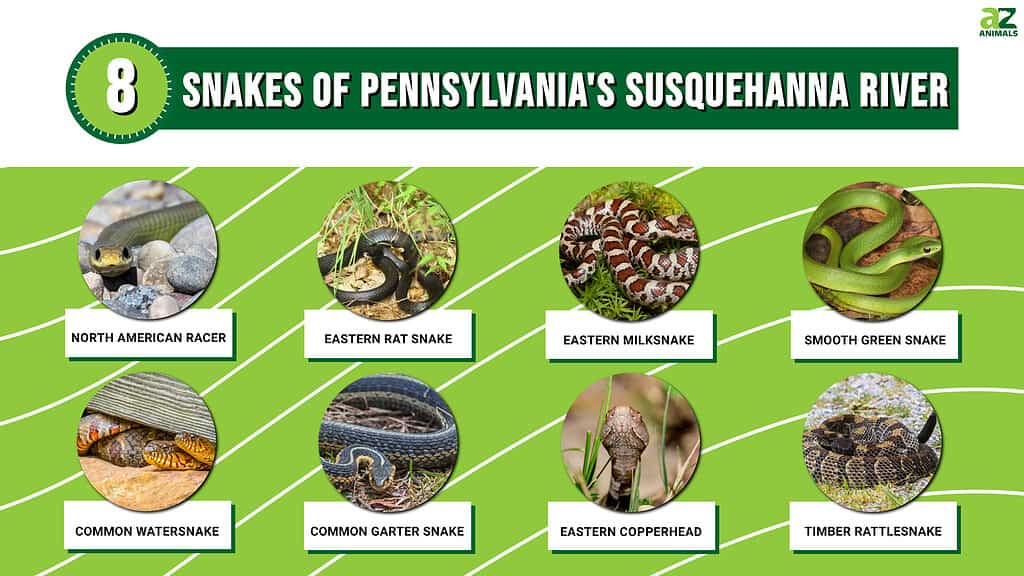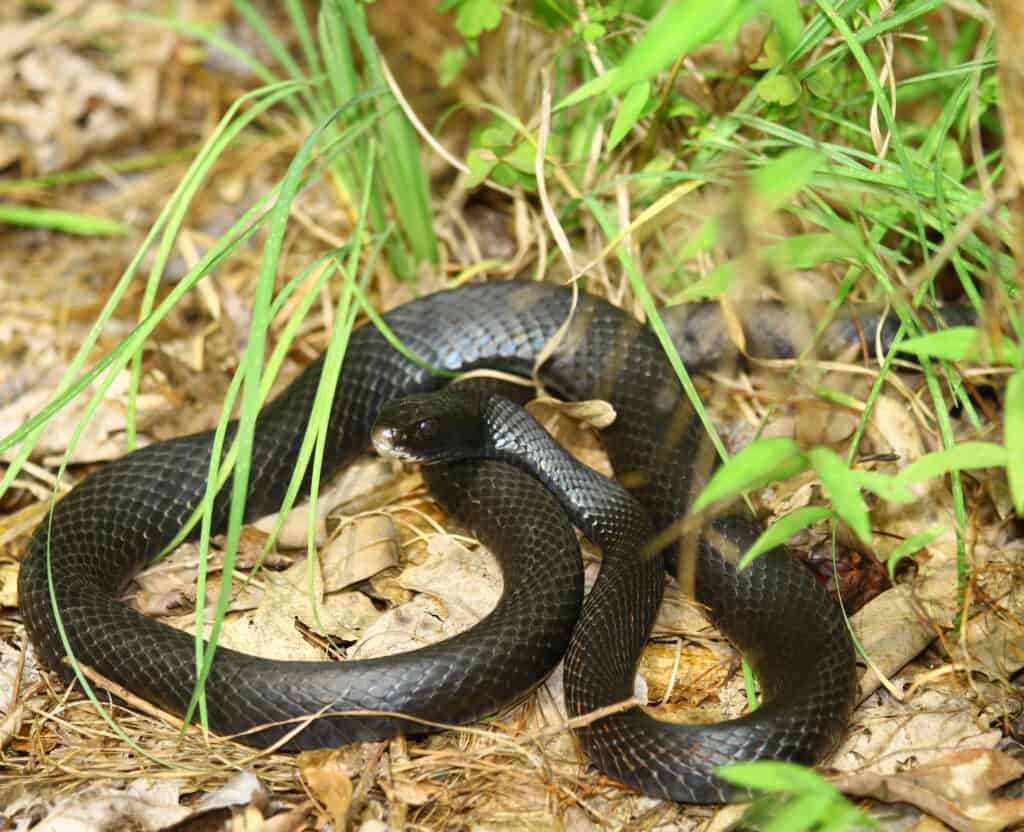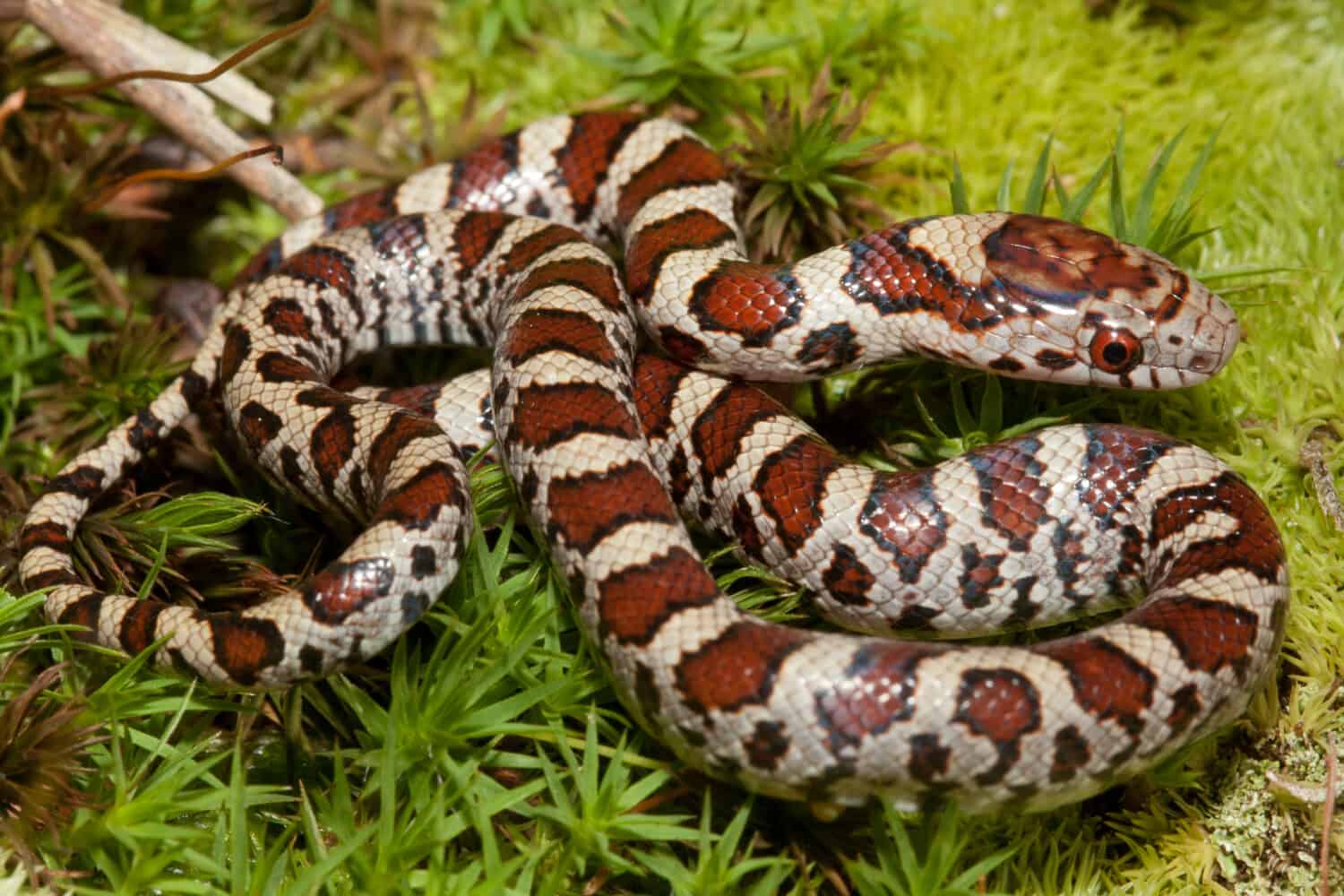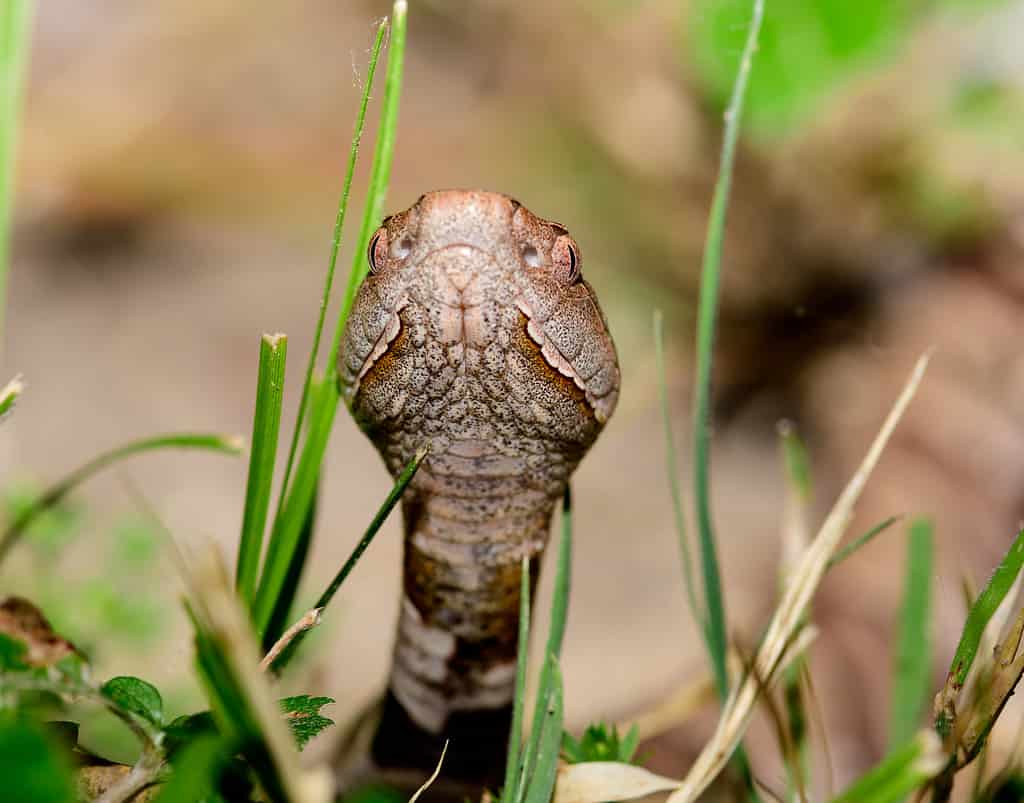
Pennsylvania is home to 21 species of snakes, but luckily, most of them are non-venomous. Furthermore, the snakes in this state are very docile and won’t attack unless provoked or threatened. The state has 19 species of non-venomous snakes, including kingsnakes, rat snakes, garter snakes, and water snakes. This brings us to the question, which snakes inhabit Pennsylvania’s Susquehanna River?
Snakes Species Around Pennsylvania’s Susquehanna River

The 400-mile-long Susquehanna River spans more than half of the land area of Pennsylvania, flowing through farms, forests, and water gaps on its journey to the Chesapeake Bay.
©Jayce Wyatt Photography/Shutterstock.com
The Susquehanna River moves past more than half of the land area of Pennsylvania and is 400 miles long, flowing through farms, forests, and water gaps on its journey to the Chesapeake Bay. Extensive forests border the upper basin’s ridges and waterways, providing local communities with clean water. In addition, this river is primarily a home for various wildlife and is essential to the fauna and flora surrounding it, including snakes. While many snake species occur in the area, here are 8 snakes of Pennsylvania’s Susquehanna River.

©
Read on for more information about these interesting Pennsylvania snakes!
1. North American Racer (Coluber constrictor)
The North American Racer is one of the snakes that occur in Pennsylvania’s Susquehanna River, and it lives up to its name as they are a fast-moving snake. In addition, they are most active during the day. Their diet consists of the following:
- Rodents
- Small mammals
- Toads
- Frogs
- Lizards
- Small turtles
- Other snakes
These snakes are curious, and they have incredible eyesight. So while North American Racers usually flee from any potential threats, if backed into a corner, they will fight for their lives. Their defense mechanisms include biting, writhing, releasing a foul order, and defecating.

The North American Racer lives up to its name as they are fast-moving snakes.
©Michael Chatt/Shutterstock.com
2. Eastern Rat Snake (Pantherophis alleghaniensis)
These snakes are one of Pennsylvania’s Susquehanna River’s inhabitants and are mainly active in the summer. Furthermore, they are diurnal during the warmer months, from spring to fall. While eastern rat snakes are terrestrial burrowers, they can swim and may enter the water to escape from predators. However, they primarily take refuge under boards, rocks, and in trees, under the bark. During the winter, these snakes go into hibernation underground or in deep crevices. The eastern rate snake is mostly solitary, but they may congregate in the same den.

The eastern rat snake primarily takes refuge under boards, rocks, in trees, under the bark
©Barry Blackburn/Shutterstock.com
3. Eastern Milksnake (Lampropeltis triangulum)
The eastern milksnake is one of the snakes that occur around Pennsylvania’s Susquehanna River and is often misidentified because of its color variations and behavior. For example, it shakes its tail to imitate a rattlesnake when threatened. However, it is non-venomous and harmless to humans. These snakes like to inhabit forested areas but are often found in barns or agricultural areas. Their diet includes:
- Amphibians
- Insects
- Rodents
- Other snakes
- Small birds
- Fish

©Nathan A Shepard/Shutterstock.com
The Eastern Milksnake likes to inhabit forested areas but is often found in barns and around farms.
4. Smooth Green Snake (Opheodrys vernalis)
The smooth green snake has to inhabit environments where it can camouflage, which isn’t hard in Pennsylvania because of the extensive forests. This snake is docile and will typically flee from threats. Bites from the smooth green snake are very rare, as they usually flee if humans come too close. However, they secrete a foul odor when provoked. Furthermore, when they hunt, they move their heads from side to side to maximize their success at sniffing out prey with its tongue.
This snake has no ears, so they need to rely on vibrations to navigate their surroundings. But they have relatively good eyesight, especially over short distances. During the warmer months, smooth green snakes are active at night and during the day. Once the weather starts to cool down, these snakes go into hibernation in social groups.

During the warmer months, smooth green snakes are active at night and during the day.
©iStock.com/tamers1
5. Common Watersnake (Nerodia sipedon)
The common watersnake is active during the day and night. However, they are primarily seen during the day basking on rocks, brushes, or stumps. When hunting during the day, they prowl the water’s edge, looking for small frogs, fish, tadpoles, leeches, worms, large insects, crayfish, turtles, salamanders, small birds, mammals, and other snakes. However, when they hunt at night, they concentrate on small fish swimming in shallow water and minnows.
Common watersnakes use their incredible sense of smell to hunt. There is an abundance of common water snakes in Pennsylvania, and they are regularly seen basking on the banks of the Susquehanna River. These snakes will flee into the water if a potential threat comes too close. Furthermore, they try to avoid any dangerous situations, but they will defend themselves if cornered. While they are not poisonous, larger specimens can inflict a painful bite.

Common watersnakes (Nerodia sipedon) are abundant in Pennsylvania.
©samray/Shutterstock.com
6. Common Garter Snake (Thamnophis sirtalis)
The common garter snake inhabits fields, forests, wetlands, marshes, meadows, ponds, and prairies to streams. But, they are primarily found near water. These snakes occur as far south as the southernmost tip of Florida all the way to the southernmost tip of the Northwest Territories in Canada. While common garter snakes are not harmful to humans, they do have venom, which they use to paralyze their prey. If they bite a human, it won’t kill them but does cause slight burning, itching, and swelling. Additionally, these snakes secrete a foul odor from their postanal glands when harmed or handled.

While common garter snakes are not harmful to humans, they do have venom, which they use to paralyze their prey.
©iStock.com/Wildnerdpix
7. Eastern Copperhead (Agkistrodon contortix)
The eastern copperhead is a solitary snake, but when they hibernate during winter, they retreat to dens, limestone crevices, or caves in social groups with other species like black rate snakes and timber rattlesnakes. Additionally, it is common to see them in groups near den sites where they drink, eat, and bask in the sun during mating season. These snakes are active during the day in spring and fall, but in summer, they are primarily active at night because of the scorching temperatures.
Eastern copperhead snakes are ambush predators as they silently wait for their prey to arrive. But, there are times when they actively pursue prey. In addition, juveniles use their colored tails as bait for frogs and lizards, which is called caudal luring. Copperheads often flee from humans but try to avoid them at all costs. However, instead of slithering away, they freeze, likely due to their incredible camouflage. But that means that it’s easy to step on them. Unfortunately, they will strike if physical contact is made, so always keep a watchful eye on the ground when hiking around the Susquehanna River. But, you might hear them before you see them, as they vibrate their tails when they feel threatened. In fact, they can make their tails vibrate at an excess of 40 times per second.
While eastern copperheads are not aggressive, they are venomous. However, their bites are rarely fatal. Researchers did studies on the effects of their venom in mice, and its potency is one of the lowest in all pit vipers. Furthermore, these snakes typically give a warning bite, injecting only a small amount of venom, sometimes none at all. Fun fact about pit vipers, they can still produce venom when they are dead, making them vital in creating antivenom.

While eastern copperheads are not aggressive, they are venomous.
©iStock.com/JWJarrett
8. Timber Rattlesnake (Crotalus horridus)
Timber rattlesnakes are most active during the warmer months, during their mating season. In winter, they will brumate in limestone crevices, often with other snake species like black rat snakes and copperheads. As a result, they often return to the same den each year.
When these snakes feel threatened, they use their rattles to warm the oncoming threat. However, you will only get one warning; if you come too close, it will strike. Like the eastern copperhead snake, the timber rattlesnake does not flee. Instead, they lay motionless when encountered in the wild, relying on their camouflage to keep them concealed. So, it is very easy to step on them. The timber rattlesnake is highly venomous. Their toxic venom is potent enough to kill an adult human. While rare, if bitten, seek medical attention immediately.

The timber rattlesnake is highly venomous. Their toxic venom is potent enough to kill an adult human.
©Frode Jacobsen/Shutterstock.com
Summary of 8 Snakes of Pennsylvania’s Susquehanna River
| Number | Snake | Fun Fact |
|---|---|---|
| 1 | North American Racer | Got its name because of its incredible speed |
| 2 | Eastern Rat Snake | Hibernate during the winter |
| 3 | Eastern Milksnake | Shakes its tail to frighten predators even though it has no rattle |
| 4 | Smooth Green Snake | They move their heads from side to side while hunting |
| 5 | Common Watersnake | Use their incredible sense of smell to hunt |
| 6 | Common Garter Snake | Possess venom that is only strong enough for small prey |
| 7 | Eastern Copperhead | These venomous snakes avoid conflict but have such great camouflage that they are often stepped on |
| 8 | Timber Rattlesnake | Highly venomous with a bite that can be fatal |
The photo featured at the top of this post is © Joe McDonald/Shutterstock.com
Discover the "Monster" Snake 5X Bigger than an Anaconda
Every day A-Z Animals sends out some of the most incredible facts in the world from our free newsletter. Want to discover the 10 most beautiful snakes in the world, a "snake island" where you're never more than 3 feet from danger, or a "monster" snake 5X larger than an anaconda? Then sign up right now and you'll start receiving our daily newsletter absolutely free.
Thank you for reading! Have some feedback for us? Contact the AZ Animals editorial team.






